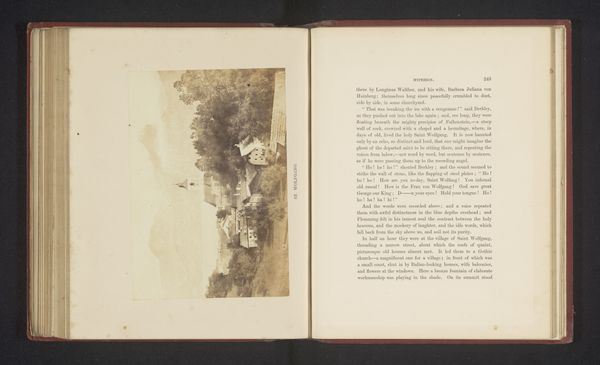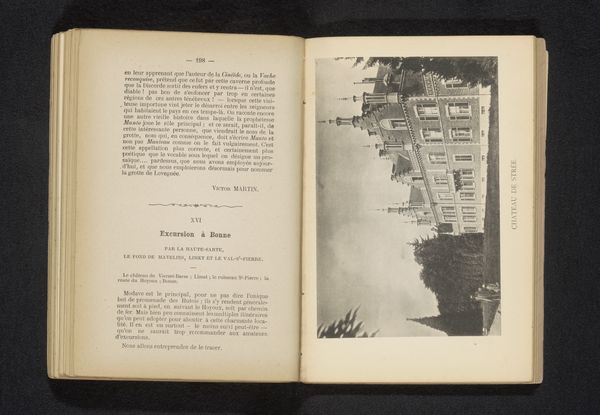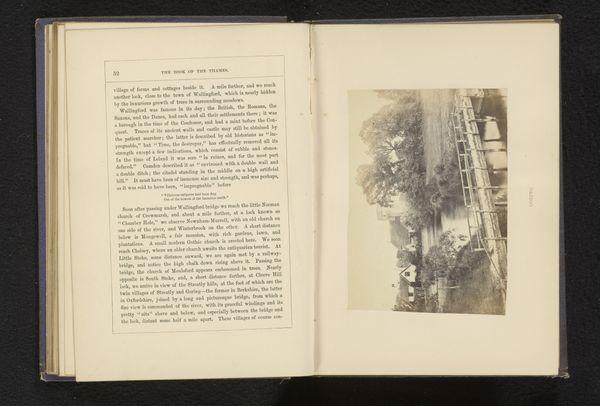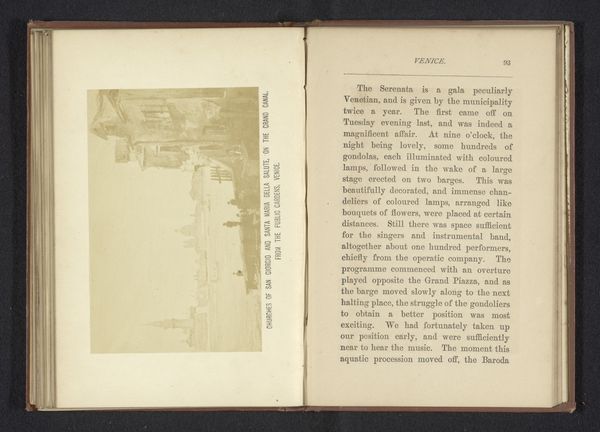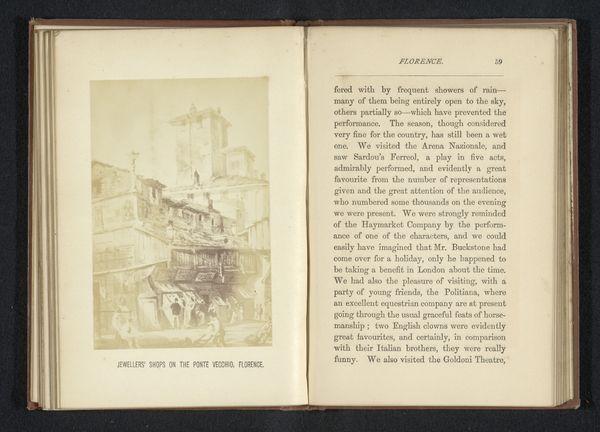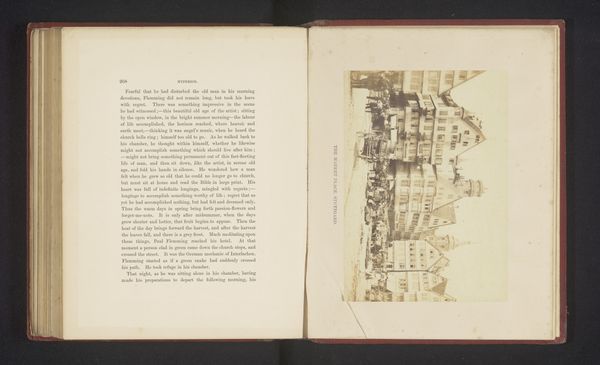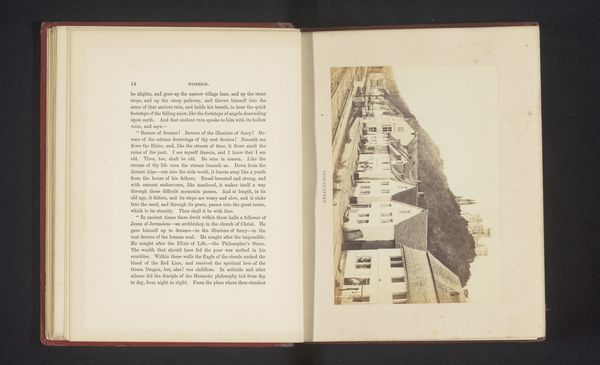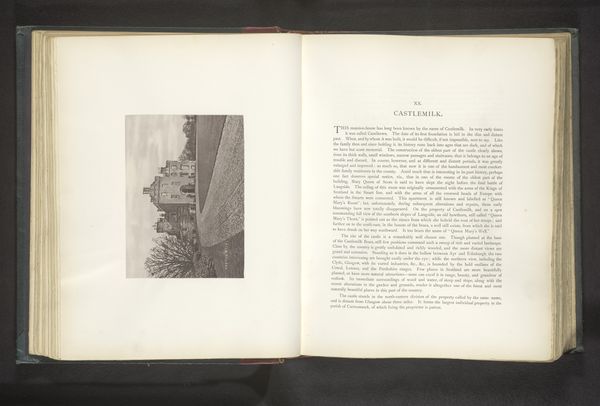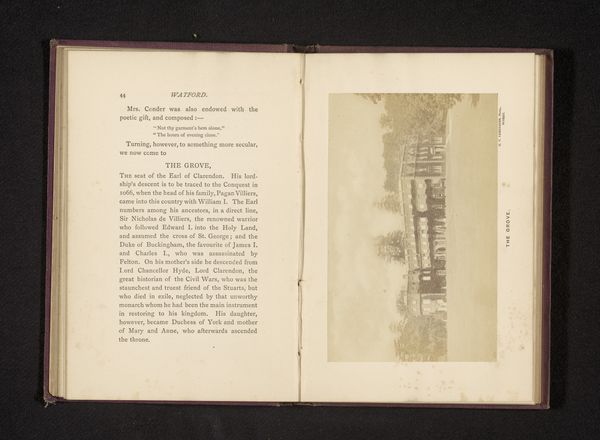
print, photography, albumen-print
#
script typeface
#
aged paper
#
homemade paper
# print
#
sketch book
#
landscape
#
photography
#
personal sketchbook
#
hand-drawn typeface
#
journal
#
thick font
#
handwritten font
#
albumen-print
#
historical font
Dimensions: width 88 mm, thickness 139 mm
Copyright: Rijks Museum: Open Domain
Editor: This is "Gezicht op Harefield Church" by H.V. Lemenager, made sometime between 1865 and 1870. It appears to be a print in a book, perhaps an albumen print. It has a really antique feel, looking like a photograph pasted into a personal sketchbook. What do you notice about this image? Curator: It's fascinating how the photograph is presented within the context of the book, seemingly part of a larger narrative. The inclusion of descriptive text opposite the image emphasizes the role of photography in documenting and preserving history. The albumen print, a popular method at the time, itself becomes a historical artifact. What stories do you think this photograph and the book tell about how this church was viewed and its importance to its local community? Editor: That’s interesting. I guess I hadn’t really considered it as part of a "project" beyond a simple photograph. Was it common for personal sketchbooks to include albumen prints? Curator: Precisely! These albums and sketchbooks provided a controlled means for individuals, families and institutions to collect and arrange imagery and textual narratives related to historical interests. They became spaces where a public image met a private narrative. Does the visual treatment of "Harefield Church" tell you about its function and symbolic value at the time? What does this pairing of image and script communicate? Editor: It emphasizes its antiquity, especially coupled with the typeface. Seeing them together really makes me appreciate the cultural context surrounding historical preservation and representation. It goes beyond just taking a picture; it’s about creating a lasting record for a specific audience. Curator: Indeed. This object showcases how photography was mobilized not just as a representational medium, but also as a powerful tool in constructing and disseminating historical narratives about place and identity. Editor: Thanks, I see so many different aspects now! It's more than just a picture of a church; it’s about how the church was perceived and its place in the larger social fabric.
Comments
No comments
Be the first to comment and join the conversation on the ultimate creative platform.

